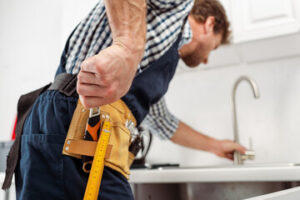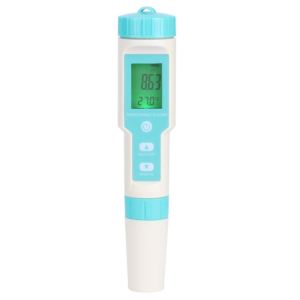If you’re interested in a career where precision and adherence to codes are paramount, becoming an electrician may be the right fit for you. However, there are many things you need to know before you can start your new job.
The first step is to earn a high school diploma or GED certificate. Then, you can attend a technical school or an apprenticeship program to complete your education and training. Contact Electricians Fort Worth now!

Electricians install, maintain, and repair electrical wiring and equipment in homes and businesses. They also inspect electrical work to ensure it meets safety standards. These professionals must have good communication skills and the ability to follow blueprints and schematics. In addition, they must be able to use a variety of hand and power tools. They may also need to take a test to become licensed.
Many electricians have an associate degree in electrical engineering and technology, but a bachelor’s degree is not required for this career path. However, a college degree can help you find more employment opportunities. Many community colleges have programs that can provide the necessary training and skills for a successful career in the field.
You should also highlight any relevant certifications and licenses on your resume. You should also include your experience working on various types of electrical projects. Include details about the size of each project and the scope of your responsibilities. Highlighting these accomplishments will help you stand out from other candidates.
A strong resume should focus on your education and training. Highlight any degrees you have earned and any relevant apprenticeships. You should also list any special skills you have developed, such as the ability to work on solar energy systems. It is also important to highlight your abilities and accomplishments, such as your ability to troubleshoot problems and create solutions.
While a high school diploma is required to become an electrician, there are many different ways to get the training and experience you need for a career in this field. You can attend a vocational school to learn the basics of electrical engineering, or you can join an electrician’s apprentice program. Some states require electricians to have a license, but others do not. In these cases, you must complete an apprenticeship program to become a licensed journeyman electrician.
Electricians must have physical fitness and the ability to work on ladders and scaffolding for long periods of time. They must also be able to see well enough to identify wires by color. They must be able to lift objects that weigh up to 50 pounds. They often need to work in cramped spaces, so they must be able to tolerate heat and humidity.
In a time of exorbitant college costs and an arduous job market for college graduates, more people are considering trade schools to get the skills they need to become licensed electricians. This career path offers high pay and valuable work experience. Plus, the Bureau of Labor Statistics projects that it will continue to grow at a faster rate than most other professions in the coming years.
After completing electrician training, you can choose to work for a general contractor or run your own electrical contracting business. You can also work for a government agency or utility company. Many of these positions require specialized knowledge and extensive travel, but they offer steady employment and excellent benefits.
Electricians can specialize in many different fields, including power generation, construction, and industrial maintenance. Power generation electricians focus on the machines that provide our electricity. They inspect, repair, and maintain these important devices that keep the lights on. Construction electricians install wiring in new home and commercial building construction. They also work with existing electrical systems and may need to upgrade them to meet current safety codes and standards.
Other specialties include fire alarm installation and testing, data and communication lines, and security systems. If you enjoy working with blueprints and diagrams, you can become a layout electrician, creating the detailed plans for wiring systems and other electronic equipment. You can also choose to become an industrial or residential electrician, specializing in specific types of wiring.
In addition to your hands-on skills, you must also obtain the proper licensing for your state. You can complete a certificate program in an electrical training school, which can be completed in four months to one year. The program will include courses in electrical fundamentals, blueprint reading, and residential wiring. You will also learn about electric motors and the National Electrical Code.
You can also pursue an apprenticeship, which is required in most states. These programs provide classroom instruction and onsite job training. Apprenticeships typically take 3-5 years and include 6,000 to 10,000 hours of training. If you have previous military or construction experience, you can reduce your apprenticeship time.
Electricians install, maintain, and repair electrical power, communications, lighting, and control networks in homes, businesses, factories, and public spaces and thoroughfares. They also ensure that all wiring and equipment meet safety standards. Electricians are also called upon to provide consultation and advice on the design of new systems. Their work can be physically demanding, and they often spend time on ladders or scaffolding and are required to use a variety of hand tools.
A typical job description for an electrician will include tasks like reading blueprints – technical diagrams that show the locations of circuit breakers, outlets, load centers, and panel boards – and using a variety of handtools, including screwdrivers, conduit benders, pliers, knives, and wire strippers, as well as power tools such as drills and saws. They also use a number of testing devices, such as voltmeters, ohmmeters, and harmonics testers, to test for proper connections and ensure that equipment is functioning correctly.
In addition to performing electrical installation and maintenance duties, electricians are sometimes asked to troubleshoot problems with existing electrical equipment. They may also be required to install or repair fire alarms and security systems. They are usually required to perform all of these duties independently, with minimal guidance from a supervisor or lead electrician.
Other electricians are employed in industrial settings, where they are responsible for maintaining and repairing electrical systems that support manufacturing processes. These systems can include automated production lines, motors, generators, and electronic controllers. In these environments, electricians typically work in collaboration with other maintenance staff and engineers to ensure that all electrical equipment is working properly.
Electricians who specialize in high-voltage electrical systems are known as linemen. They are responsible for installing and repairing power poles, moveable bridges, floodlight towers, generators, and other electrical equipment. They are also required to perform inspection, construction, and repair activities on electrical systems at power plants, telecommunications towers, and air conditioning units.
An electrician’s salary can be affected by several factors. These include their job duties, industry, and location. In addition to their standard wages, electricians may also receive bonuses. These can be performance-based or based on their level of experience and training. Depending on the size of their company, electricians can also benefit from working overtime. This can lead to a significant increase in their income.
As a career path, becoming a licensed electrician requires completing an apprenticeship and obtaining a trade school certificate. These programs usually last four years and are highly intensive. However, some employers offer tuition reimbursement to their apprentices. They can also provide on-the-job training to help them learn the skills needed for this career.
A high voltage electrician focuses on troubleshooting power issues and maintaining large circuits and electrical systems. They must be comfortable with working with dangerous equipment and adherence to safety protocols. They are also responsible for monitoring power lines and towers. The demand for this skill is growing due to aging infrastructure and the rise of electric vehicles.
In addition to earning their standard pay, many electricians can earn additional perks and bonuses. For example, they can be eligible for overtime pay when they work on a project that requires extra time or effort. This is particularly common for emergency repairs or projects that require tight deadlines.
Those who work in the manufacturing industry can also earn higher salaries. This is because these jobs often require a deeper knowledge of industrial machinery and processes. Electricians who specialize in these industries can earn more than those who focus on residential work.
The specific industry that an electrician electrifies can also send shockwaves through their earnings potential. Industries such as mining, oil, and agriculture have specialized requirements that demand a higher level of expertise. Electricians who specialize in these fields can command high salaries, especially in areas where demand is high.
In addition to the varying factors that affect an electrician’s salary, regional variations can have a big impact on their pay. Cities with high population densities typically see electricians earn more than those in rural areas. This is because the workload and the demands of the job are higher in metropolitan areas. Moreover, those who work away from home on big construction projects can expect to earn the most. This is because they can earn a lot of overtime and can receive a living allowance.




